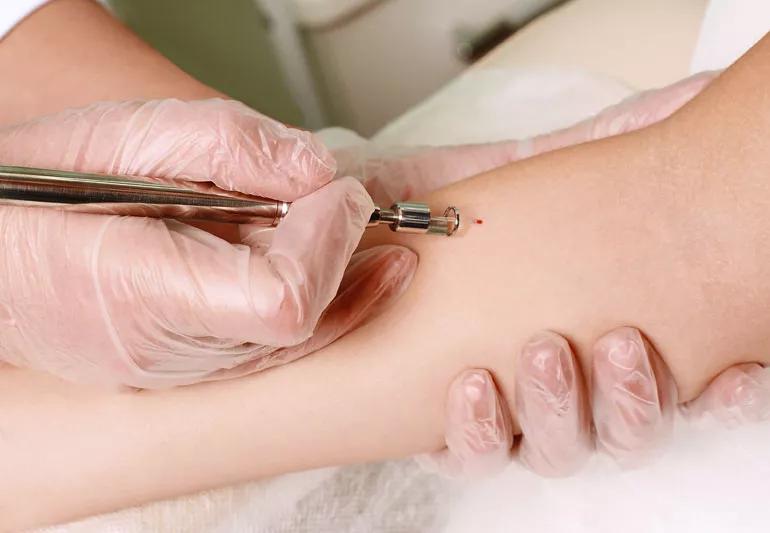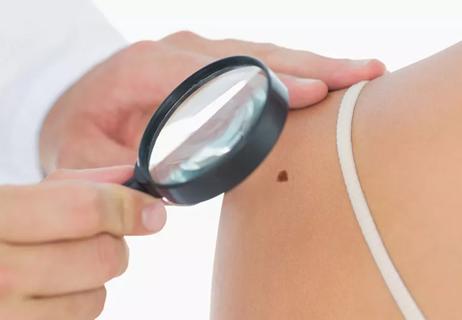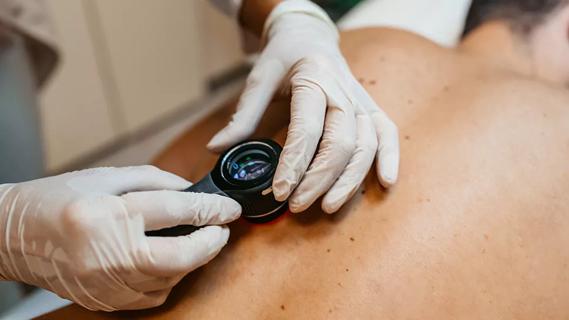Mohs surgery removes most common skin cancers

Imagine walking into your doctor’s office with skin cancer. During the next few hours, you undergo a procedure that removes and examines every bit of the cancer, all the while testing to make sure you’re completely cancer-free. Then, you get to go home a skin cancer survivor.
Advertisement
Cleveland Clinic is a non-profit academic medical center. Advertising on our site helps support our mission. We do not endorse non-Cleveland Clinic products or services. Policy
Is this blowing your mind yet? Believe it or not, this happens every day. This skin cancer removal procedure is called Mohs surgery, named for the surgeon who developed it in the 1930s.
“The Mohs procedure ensures that the cancer is taken out with a high certainty of complete removal,” says plastic surgeon and otolaryngologist, Brian Gastman, MD.
Mohs surgery removes the skin cancer while preserving as much healthy tissue as possible, which is critical with cancers near the eyes, ears, nose, mouth, hands, feet and genitals.
The Mohs cure rate is spectacular for basal cell and squamous cell carcinomas, which are the most common skin cancers: 99% for basal cell, 97% for squamous cell.
This procedure for skin cancer removal is the only method that evaluates 100% of the margins and is only performed by trained dermatologists, Dr. Gastman says.
The margin is the border of the tissue that’s removed in skin cancer surgery, an important indicator of whether the cancer has been entirely removed.
“You’re fully awake during the surgery, and we explain the procedure and the involved steps in detail,” Dr. Gastman says.
First, the site of the cancer is numbed, then your doctor quickly removes the cancerous tissue and a bit of the surrounding tissue. The area is mapped, and the tissues and margins are examined microscopically by your doctor for cancer, all while you wait in the office.
Advertisement
During the tissue examination, Dr. Gastman explains that “there’s lots of downtime during which you can relax.” He recommends bringing a book or electronic device to pass the time.
If the margins are cancer-free, the surgery is complete and your wound is stitched up. If not, the process is repeated until the site is completely clear of cancerous cells.
A simple wound dressing is placed over the surgical area. Healing time is minimal, depending on the size of the wound.
“When they leave, patients say, ‘Wow, this wasn’t so bad.’ They’re pleasantly surprised at how straightforward it is,” Dr. Gastman says. “They come in wondering how to get rid of skin cancer, and in almost all cases, leave satisfied.”
Not all skin cancers need to be treated with Mohs surgery.
Skin cancers are most common on the head and neck and often treated with Mohs, but those on the trunk and extremities are only treated with Mohs surgery under certain circumstances, which your surgeon can determine, Dr. Gastman explains.
Another kind of skin cancer called melanoma isn’t usually treated with Mohs surgery because it’s biologically different from basal cell and squamous cell carcinomas, notes Dr. Gastman.
Mohs surgery, though, is the single most effective technique for completely removing the most common kinds of skin cancer. Because the surgery can be accomplished relatively quickly with instant feedback on the success of removing the cancerous cells, the procedure brings many people peace of mind.
“It’s a really fabulous way of getting the cancer out — and the patient knowing it’s out,” says Dr. Gastman.
Advertisement
Learn more about our editorial process.
Advertisement

Wear sun-protective clothing, apply sunscreen every day and avoid tanning to help reduce your risk

During an annual exam, your provider will check for any moles or spots that have changed in size, color or shape

Family history matters for melanoma, but the connection isn’t as strong for other skin cancers

Both skin cancers are increasingly affecting younger populations

The risk is less, but sunscreen is never a bad idea

Scalp cancers can occur because of long-term sun exposure

The likelihood of melanoma returning varies by stage, but you can take steps to help prevent recurrence by wearing sunscreen and monitoring your moles

The size, shape and color of moles may offer clues that point to melanoma

Babies can get congested easily, but you can calm their cough by keeping them hydrated, using nasal drops and running a humidifier

Weight loss may cause loose, sagging skin and muscle loss to your rear

Several conditions, like vitiligo and fungal infection, can cause a loss of pigmentation, leading to white spots or patches on your skin